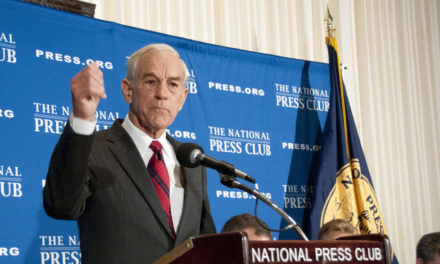Inflation is always and everywhere a rip-off. – Bill Bonner
BALTIMORE, MARYLAND — The nice thing about inflation, at least from the feds’ point of view, is that it doesn’t leave fingerprints.
Today’s dollar, for example, is worth only three cents of the pre-1971 dollar. But who dunnit? Who stole 97 cents out of every dollar?
New-Buck Scam
People thought the switch to a new buck in 1971 was just a “technical” move. Still do. But there was a big difference. The old dollar was a killjoy. The feds just couldn’t have much fun with it. But the new one was like an inflatable sex toy — it would go along with anything.
And when the first wave of consumer price inflation hit in the ’70s, few people understood what had happened. They thought the Arabs had pulled a fast one. But as we saw last week (catch up here and here), the First Oil Shock only returned the real price to where it had been before the feds’ funny-money printing began.
Investors didn’t notice their pockets were being picked either. In new dollars, the Dow barely moved throughout the ’70s. But it lost 92% of its real value.
And still today, only you… and we… seem to realize how the Federal Reserve’s money printing and ultralow interest rate policies (from 2009 to 2015) put $20-some trillion into the pockets of the richest people in the country.
Most people got nothing from it. And relatively, the poor got poorer as the rich got richer. The bottom 50% of the population are actually 30% poorer today than they were in 1999 — even using the feds’ phony inflation calculator.
But does anyone blame the real culprits? Nope. They blame the Mexicans and the Chinese. Do they vote for someone who pledges to end inflation? Or someone who calls for more of it?
It doesn’t matter whether the inflation goes into the capital markets or the consumer economy… it works the same way, like a thief in the night. And now underway is probably the biggest heist in history…
Like a Street Mugging
Milton Friedman was wrong about inflation. It is “always and everywhere a monetary phenomenon,” said he. But that misses the point of it. A shooting star is a phenomenon. So is irritable bowel syndrome; nobody is sure what causes it.
But inflation is no more a “phenomenon” than a street mugging; it is done for a reason, to transfer wealth from some people to other people. It’s a way for the feds — and their clients, cronies, and hangers-on — to get more than taxpayers are willing to give them.
If they tried to support their boondoggles and jackass programs by direct taxation alone, there would soon be mobs gathered in the Capitol, with pitch bubbling and rails at-the-ready.
But inflation?
Here at the Diary, we guess about a great number of things — always trying to connect the dots. We’ve been at it for so long, we’ve probably been wrong about most everything. We’ll get to the rest in due course.
But one thing we’re probably not wrong about is inflation. And when the Fed announced at its December 2015 meeting that it would stop inflating and “normalize” its monetary policy, we knew it was BS. Why?
With its ultralow interest rates and its quantitative easing (QE) programs, the Fed created a hothouse atmosphere. The QE program alone gave some $3.6 trillion in new money to big investors.
It was as if a very rich person in a small town bid on all the houses that came up for sale. Prices rose. Everyone thought he had gotten richer. But take away the reckless buyer, and the market would quickly adjust to normal supply and demand pressures. Prices would fall back to “normal.”
Falling prices would cause the “wealth effect” to reverse into a “negative wealth effect.” The economy would go into recession.
Keep the Heat On
Either you keep feeding warm air into the hothouse… or the orchids die. Greenspan, Bernanke, Yellen, and now Powell — have all kept the heat on.
The last Fed chief to turn off the heat was the recently deceased Paul Volcker. He saw the “Inflate-or-Die” trap. To escape it in 1980, he raised the Fed’s key rate to 20%, cut off the hot air, and opened the windows, causing the worst U.S. recession since the Great Depression.
Naturally, politicians, economists, and the press howled and whined. A mob even burned Volcker in effigy on the Capitol steps. But inflation quickly fell, from nearly 14% in 1980 to only 3.2% in 1983.
Years before, another great Fed chief, William McChesney Martin, explained why a good central banker is more likely to be branded a villain than a hero:
In the field of monetary and credit policy, precautionary action to prevent inflationary excesses is bound to have some onerous effects… Those who have the task of making such policy don’t expect you to applaud.
Tough Love
It’s been 40 years since Volcker’s tough love. Since then U.S. federal debt has gone from under $1 trillion to $23 trillion.
The Dow, too, went from under 1,000 to over 29,000. And the people willing to support an honest central banker — traditional fiscal conservatives and Ronald Reagan — have disappeared.
As for the old conservatives, they went AWOL when Republicans realized that, in a funny-money world, “deficits don’t matter.”
William McChesney Martin died in 1998. (He was replaced at the Fed in 1970 when he resisted the new-money plotters.) Paul Volcker died late last year.
Today, Fed jefes are willing to go along with the gag, and are described by the popular press as “saving the world” (Greenspan), or “heroes” with “the courage to act” (Bernanke).
And the current U.S. president is not worried about curbing inflation. He wants more of it. Here’s the commander in chief commenting on the Fed’s brief fling with prudence:
It was a killer when they raised the rate. It was just a big mistake. And they admit to it. They admit to it. I was right. I don’t wanna be right, but I was right.
More to come…
Regards,
Bill
• This article was originally published by Bonner & Partners. You can learn more about Bill and Bill Bonner’s Diary right here.




